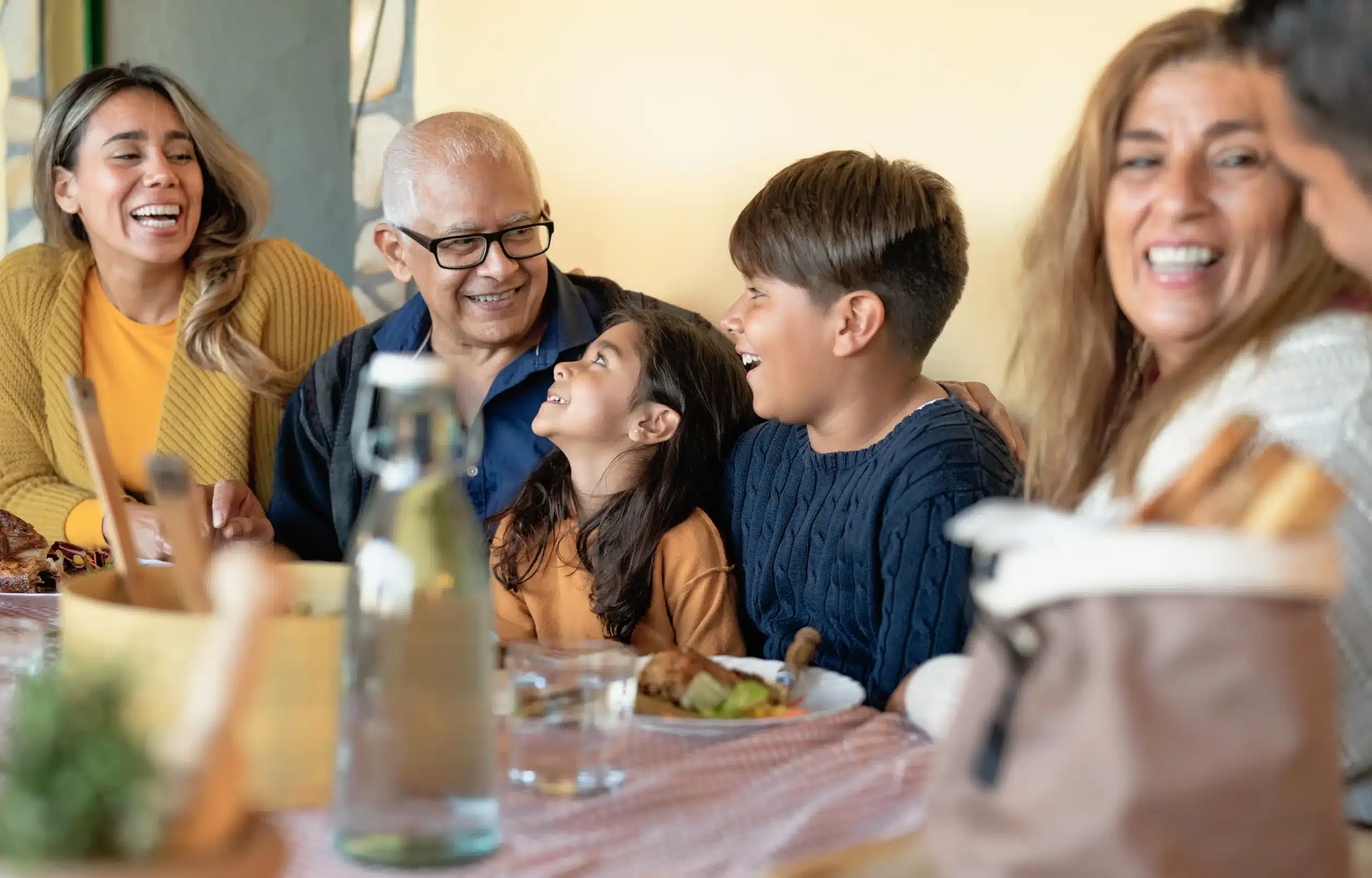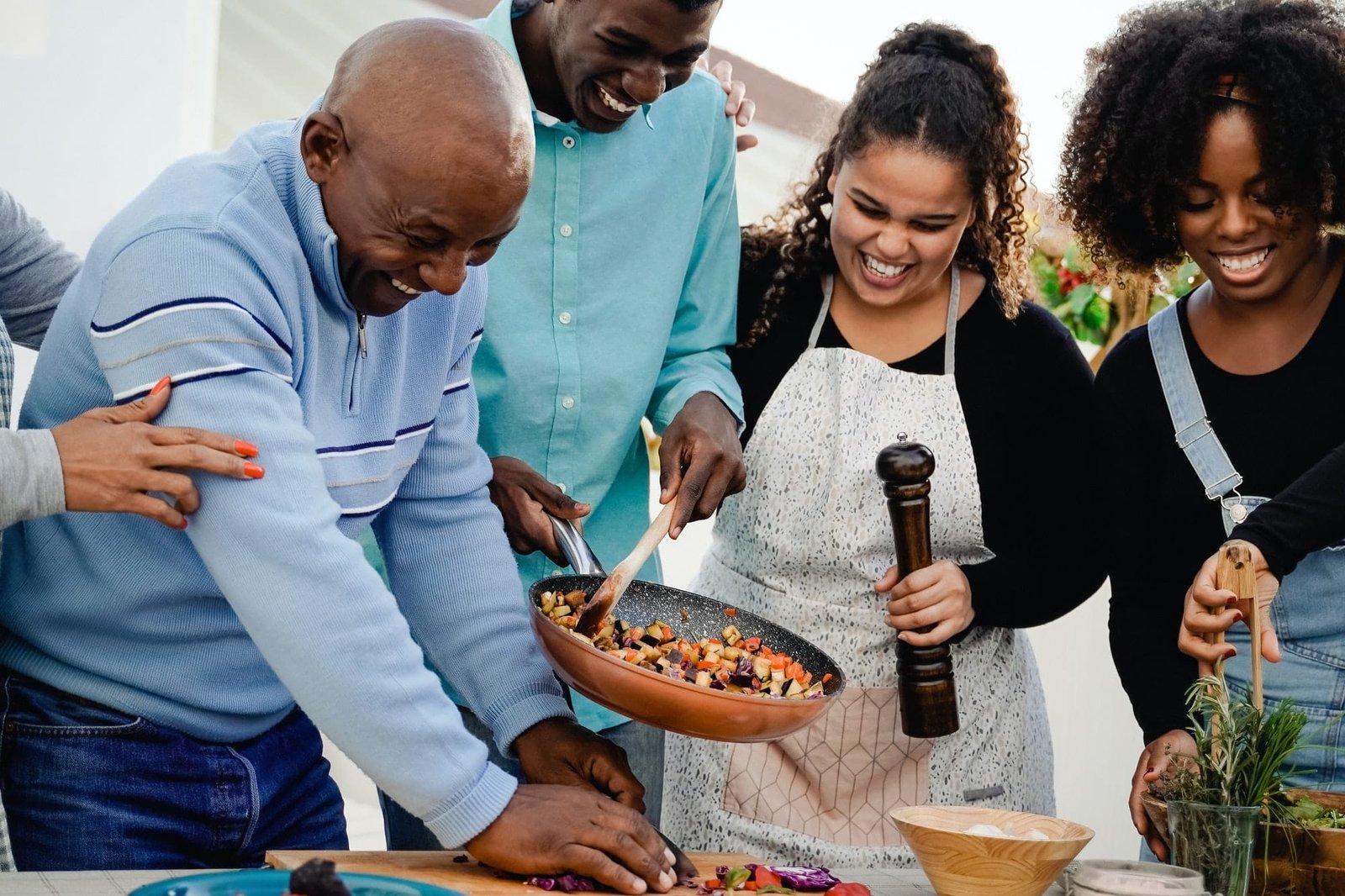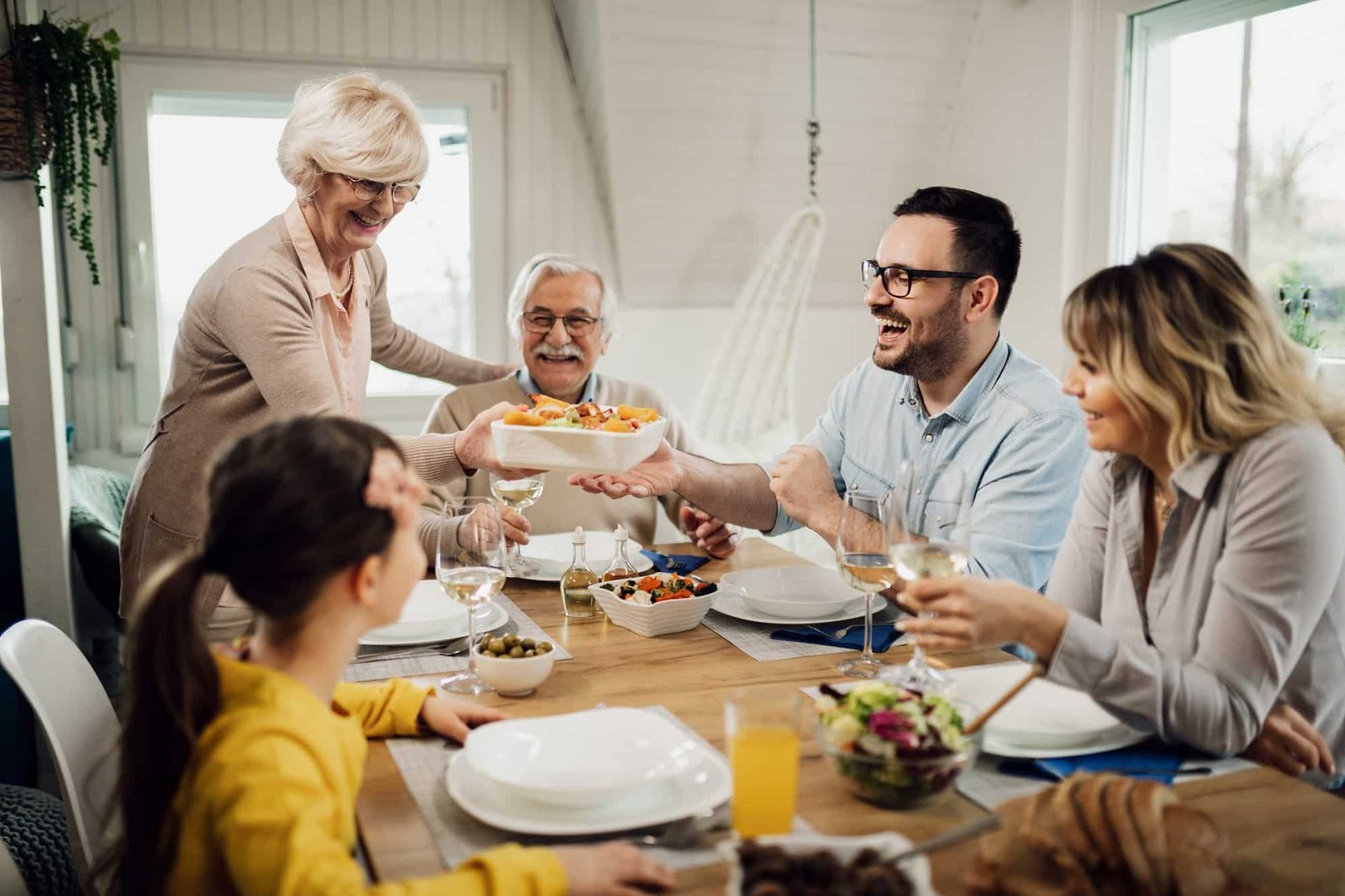Like a secret recipe passed down through generations, the magic of family ties is in the sharing. You’ve probably felt it, too, that bond over bubbling pots and shared plates. In this article, you’ll discover some dishes that bring families together. It’s not just about the food you’re cooking – the laughs, the stories, and the memories. So, let’s dive into the world of family lunches and stir up some connection.
The Lunch Pro website features content that explores the meaningful connections we share with others. We will be publishing articles on topics such as catching up with old friends, reuniting with former colleagues, and reminiscing about memorable places and recipes. This article touching upon the dishes that being families together is just the beginning of our focus on strengthening these cherished bonds.
Comfort Food: Key Takeaways for the Dishes That Bring Families Together
- Sharing meals regularly strengthens familial bonds and fosters deeper connections.
- Trying cultural cuisines like sushi rolls or Italian lasagna can be a fun and educational experience for the whole family.
- Crafting a conversation-stimulating menu nourishes relationships and creates a dynamic dining experience.
- Incorporating family traditions in meals keeps the family’s legacy alive and adds a special touch to meals.

In this Article
The Power of Shared Meals
You’ll often find that sharing meals regularly can be a powerful tool to strengthen familial bonds and foster deeper connections. These mealtime rituals are more than just eating together; they create a sense of belonging and unity.
Imagine this: you’re sitting around a table, sharing stories and laughter over warm plates of food. You’re not just feeding your body but also nourishing your relationships. This is the core of food psychology. You’re engaging in a ritual that strengthens your familial ties, creating shared memories you’ll carry for years.
Many families also participate in cooking classes to learn traditional recipes and techniques, ensuring that culinary practices are passed down through generations.
But it’s not just about the act of eating together. It’s also about the preparation of the meal, the shared responsibility, and the mutual appreciation of the effort that goes into creating such a feast. It’s about honoring family traditions, exploring new cuisines, and embracing change

The Importance of Food Culture
Food culture plays a vital role in shaping our identities, bringing people together, and preserving traditional practices. It is a reflection of our heritage, history, and values, often passed down from generation to generation through traditional recipes, cooking techniques, and dining etiquette. These culinary customs are more than just methods of preparing food; they are a way to connect with our roots and share our heritage with others.
When we gather around the table to enjoy a meal steeped in tradition, we are not just eating; we are participating in a ritual that honors our ancestors and keeps their stories alive. Traditional recipes, whether they are simple or complex, carry the essence of our cultural identity and provide a sense of continuity and belonging. By embracing these culinary traditions, we can create meaningful connections with our past and foster a deeper appreciation for the diverse food customs that shape our world.
Food and Identity
Food is an essential part of our identity, and the way we prepare and consume it can reveal a lot about our cultural background, personal preferences, and values. Traditional foods, in particular, are often closely tied to our sense of identity and can evoke strong emotions and memories. For example, the smell of a traditional dish can transport us back to our childhood, reminding us of family gatherings and special occasions.
These sensory experiences are powerful reminders of who we are and where we come from. They connect us to our heritage and provide a sense of comfort and familiarity. Whether it’s a holiday feast, a family recipe passed down through generations, or a dish that represents our cultural roots, traditional foods play a crucial role in shaping our identity and preserving our cultural legacy.
Top Comfort Food Recipes for Family Lunches
The perfect dish can transform your family lunch, so let’s dive into some top picks that will bring everyone closer. For busy families, easy dinner recipes like one-pot pasta or sheet pan meals can be a lifesaver, offering quick and healthy options. Consider healthy lunch options like a colorful veggie stir-fry or a Mediterranean-inspired salad. For those with dietary preferences, consider adapting traditional recipes to create a vegetarian dish, such as making a vegetarian lasagna with layers of roasted vegetables and ricotta cheese. These dishes provide a bounty of nutrients and open the door for a conversation about the importance of a balanced diet.
Why not take it a step further and venture into cultural cuisine exploration? Try making sushi rolls or a hearty Italian lasagna. These dishes can be a fun, hands-on experience for the whole family and a chance to learn about different cultures. Plus, they’re delicious, which never hurts.
Don’t be afraid to experiment with various dishes. You can turn the family lunch into a buffet of world cuisines that can be entertaining and educational. Remember, creating healthy, delicious, and meaningful meals is vital. So, take the time to find the perfect dishes that cater to everyone’s tastes and dietary needs.
Now that we’ve explored some top dishes for family lunches let’s move on to crafting a conversation-stimulating menu.
Here are some other ideas for dishes to prepare together
Hearty Casseroles
Hearty casseroles are a staple of comfort food, and for good reason. They are often made with rich, flavorful ingredients like meat sauce, sour cream, and cheese, which come together to create a satisfying and filling meal. Casseroles are also a great way to use up leftover ingredients, making them a practical and economical option for families and individuals alike.
The beauty of casseroles lies in their versatility and ease of preparation. You can customize them to suit your family’s tastes and dietary needs, making them an ideal choice for busy weeknights or special occasions. Whether it’s a classic lasagna, a creamy chicken and rice bake, or a vegetarian dish packed with seasonal vegetables, casseroles offer endless possibilities for delicious and comforting meals that bring families together.
International Inspirations
International cuisines offer a wealth of inspiration for home cooks, from the spicy flavors of Korean kimchi to the rich sauces of Italian pasta dishes. By exploring different cultural traditions and ingredients, we can add variety and excitement to our meals, while also learning about the history and customs behind different dishes. For example, traditional Japanese dishes like sushi and ramen are not only delicious but also steeped in cultural significance, with intricate preparation techniques and presentation styles that reflect the country’s attention to detail and respect for tradition.
Incorporating international flavors into your family meals can be a fun and educational experience. It allows you to introduce your loved ones to new tastes and textures while fostering an appreciation for the diverse culinary traditions that make our world so rich and vibrant. So, why not take a culinary journey around the globe and discover the many ways that food can bring us closer together?
Crafting a Conversation-Stimulating Menu with Traditional Recipes
Building on from our exploration of top dishes for family lunches, let’s dive into crafting a menu that doesn’t just satisfy your taste buds but also sparks stimulating conversations around the table.
Understanding Menu Psychology is critical in this process. The dishes you choose should not only cater to the dietary preferences of your family members but also serve as conversation starters. Consider dishes with a story or history behind them. Many traditional recipes are considered part of our intangible cultural heritage, recognized by UNESCO for their role in preserving cultural identity and social practices. Maybe a family recipe passed down through generations or a dish inspired by a memorable family holiday. These meals invite questions, reminiscing, and sharing, creating a dynamic dining experience.
Remember, the aim is to get everyone talking and connecting. So, be mindful of dietary preferences. Dietary restrictions or choices should not isolate any family member. If your daughter is vegan or your son has a gluten allergy, make sure the menu includes options for them. This inclusivity encourages openness and respect, essential ingredients for meaningful conversations.
In crafting your conversation-stimulating menu, you’re feeding bodies and nourishing relationships. Up next, let’s explore how the act of cooking together can be a bonding experience.

Sauces That Bring Families Together
Sauces are a key component of many traditional dishes, adding flavor, texture, and moisture to a meal. From the sweet and sour sauce of Chinese cuisine to the rich tomato sauce of Italian cooking, sauces have the power to bring families together and create lasting memories. Whether it’s a homemade sauce made with love and care or a store-bought variety, the right sauce can elevate a meal from ordinary to extraordinary.
In many cultures, sauces are also an important part of traditional cooking practices, with recipes passed down from generation to generation. For example, in some Asian cultures, fish sauce is a staple condiment used to add flavor to a variety of dishes, from stir-fries to soups. Similarly, in Indian cuisine, curry powder is a key ingredient in many traditional recipes, adding warmth and depth to dishes like curries and stews.
By exploring the world of sauces and traditional cooking practices, we can gain a deeper appreciation for the cultural significance of food and the ways in which it brings people together. Whether it’s a family recipe or a cultural tradition, the right sauce can make all the difference in creating a memorable and enjoyable meal. So, next time you’re in the kitchen, consider the sauces that have the power to transform your dishes and bring your family closer together.
Cooking Classes Together: A Bonding Experience
Let’s turn that menu into a unifying activity by cooking together, engaging everyone in a shared culinary experience that will bring you all closer. For example, marinating chicken in yogurt can result in tender chicken that enhances the overall flavor of your dish. Not only does this activity serve as a fun pastime, but it also promotes Culinary skill-building and Recipe Swapping among family members.
As you embark on this culinary adventure, the kitchen transforms into a space of laughter, learning, and love. Here are a few experiences that you might encounter:
- The joy of teaching your kids how to knead dough or decorate cookies fosters their creativity.
- The excitement of learning a beloved family recipe from your parents or grandparents, keeping the tradition alive.
- The satisfaction of sharing your secret spaghetti sauce recipe with your siblings, nurturing bonds.
- When you all sit down to enjoy the meal you’ve prepared together, the sense of accomplishment strengthens connections.
Incorporating Family Traditions and Cultural Foods in Meals
Every family has unique culinary traditions that can enhance the flavor of their meals and provide a way to celebrate their heritage while creating long-lasting memories and dishes that bring families together. These traditions are like culinary heirlooms, passed down from generation to generation.
Visiting traditional restaurants can also provide inspiration and a deeper connection to your culinary heritage, offering authentic regional dishes that reflect your family’s history.
Think about your grandmother’s classic apple pie or your mother’s signature lasagna. These are more than just meals; they are recipes passed down through generations, carrying stories and values from your ancestors. They are an integral part of your identity and a symbol of your family’s history. Incorporating these traditions into your meals keeps your family’s legacy alive and thriving.
If you’re not an expert chef, don’t worry! These recipes are often simple, home-cooked meals that anyone can prepare. The magic lies in the love and history that these recipes embody. You can start by asking your relatives about their favourite family meals. Remember to write down the recipes and share them with your children to continue this legacy with future generations.

Bring Families Together Conclusion
Come together, cook, converse, and connect over comforting cuisine. Let these luscious lunches link you with loved ones and leave lasting memories. Rekindle relationships, revisit family traditions, and relish shared meals‘ remarkable power. You nourish your bodies and your bonds by blending your bonding with a bounty of beautiful bites. So, set the table, serve the stories, and savour the sweetness of family unity.









